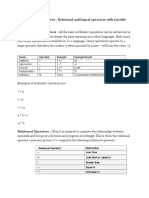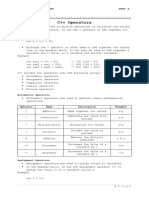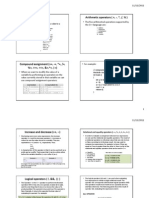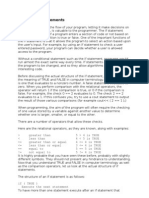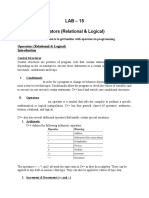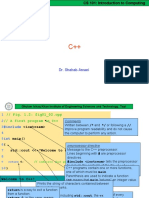0% found this document useful (0 votes)
31 views31 pages2 Structured+Programming+18 10 2023
This document discusses structured programming in C++. It covers conditions using if/else statements, boolean expressions that return true or false, and several mathematical functions in C++ like max, min, square root, and others from the cmath header file. Practical examples are provided like checking if a user is old enough to vote and evaluating boolean expressions.
Uploaded by
abdoalsenaweabdoCopyright
© © All Rights Reserved
We take content rights seriously. If you suspect this is your content, claim it here.
Available Formats
Download as PDF, TXT or read online on Scribd
0% found this document useful (0 votes)
31 views31 pages2 Structured+Programming+18 10 2023
This document discusses structured programming in C++. It covers conditions using if/else statements, boolean expressions that return true or false, and several mathematical functions in C++ like max, min, square root, and others from the cmath header file. Practical examples are provided like checking if a user is old enough to vote and evaluating boolean expressions.
Uploaded by
abdoalsenaweabdoCopyright
© © All Rights Reserved
We take content rights seriously. If you suspect this is your content, claim it here.
Available Formats
Download as PDF, TXT or read online on Scribd
/ 31








